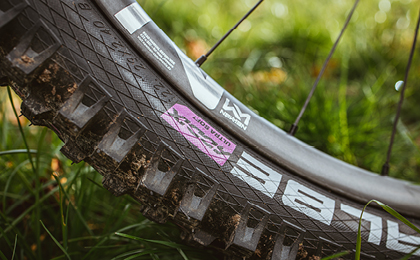SIZE DESIGNATION
WHAT DO THE DIFFERENT SIZES MEAN?
The sizes of bicycle tires are now designated according to the European tire and rim standard ETRTO (European Tire and Rim Technical Organization). In practice, however, the older English and French names are also used.
The ETRTO size designation (e.g. 37-622) indicates the width (37 mm) and the inner diameter of the tire (622 mm). This designation is unambiguous and allows a clear assignment to the rim size.
The inch designation (e.g. 28 x 1.40) indicates the approximate outside diameter (28 inches) and the tire width (1.40 inches). There is also the inch designation in the form 28 x 1 5⁄8 x 1 3⁄8 (approximate outer diameter x tire height x tire width). The customs information is not precise and not clear. For example, diameters of 559mm (MTB), 571mm (triathlon) and 590mm (Dutch touring bikes) are all labeled 26-inch. Tires with a diameter of 622 and 635 mm are both referred to as 28 inches. Curiously, tires with an inner diameter of 630 mm are called 27 inches. These designations have their origin - and their meaning - from the times of the tire brake that acted directly onto the tire. At that time, the exact outer diameter of the wheel and tire was dictated by the brake. Depending on the tire width, there were different standards for the inner diameter. In English language areas of the world and in MTB sports, the inch designations are widespread.
The French sizing (e.g. 700 x 35C) indicates the approximate outside diameter (700mm) and tire width (35mm). The letter at the end gives an indication of the inside diameter of the tyre. In this case, the C stands for 622 mm. The French designation does not exist for all tire sizes. B, for example not used for MTB sizes in the 700 sizes.


WHAT TIRE SIZES ARE THERE?
You should find almost every known size designation in this list. We have tried to include all size designations that are used in the market or have been used in the past. Tire sizes with a classic fractional size designation are often found on old Schwalbe tires, and sometimes even on current models if that size designation is still in common usage.
DIFFERENCES BETWEEN 28" AND 29" INCHES
WHAT MIGHT ALSO INTEREST YOU

WHY AIR PRESSURE IS SO IMPORTANT





